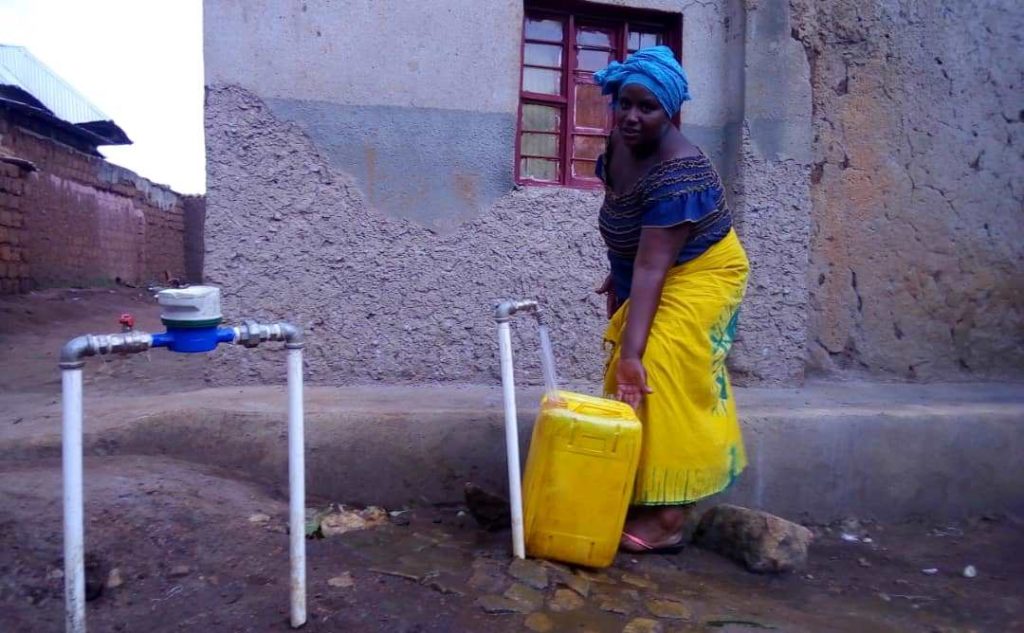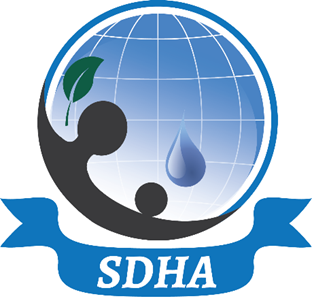
- Why SDHA intervenes in Water sector?
Access to clean water and sanitation is among the core human rights for all. Water is life and sanitation Dignity. The global and local issues on access to clean water are at the heart of concerns. Water is one of the world’s most abundant resources. Yet in many regions, clean water is critically in short supply which endangers the economy, public health, energy production, and food supply.
- Figures at a glance /Facts and statistics
Access to clean water and sanitation:
2.3 billion people in the world – one in three – do not have a decent toilet. (WHO/UNICEF Joint Monitoring Programme (JMP) Report 2017 update) 844 million people in the world – one in 9 – do not have clean water. … (WHO, 2017) 42% of healthcare facilities in Africa do not have access to safe water
An estimated 2.5 billion people lack access to improved sanitation (more than 35% of the world’s population): 1/3 people don’t use improved sanitation whereas 1/7 practices open defecation.
As consequences; at any time one time, Half the world’s hospital beds are occupied with patients suffering from water borne diseases and 1,000Children die every day (Each 90 Second a child dies) due to preventable water and sanitation related diarrheal diseases
1.8 Billion people globally use a source of drinking water that is focally contaminated
The Africa water vision 2025 had fixed an ambitious target to progressively reach for both Clean Water and sanitation: 25% -25%, 75%-70 % to 95%-95% by 2005, 2015 and 2025 respectively.
- Future trends:
Water scarcity affects more than 40 per cent of the global population and is projected to rise
The world faces a Challenge to meet about 20-percent increase in global demand for fresh water by 2050!
250 Millions of Africans could face water shortages by 2020.
4.Description of SDHA interventions in WASH sector
SDHA seeks to contribute to the Government of Rwanda target of reaching 100% of access to clean water and sanitation by year 2017/2018. This will be achieved while strengthening the financial viability of the utility and ensure sustainable functionality of water supply infrastructure by developing effective management structures and well- regulated public private partnership (PPP) arrangements.
In this line, SDHA focusses on the following activities:
a. Construction of water facilities:
These infrastructures include but not limited to water sources protection (safe outlet of water sources), water distribution facilities (Piping and water storage facilities, water kiosks).
b. Community Mobilization for local ownership and effective use of water:
SDHA avoids development partners’ errors in the past where investments in water sector collapsed due to lack of coupling with social mobilization. The intent of this activity is to value the water and sustain the facilities. SDHA has developed its social marketing tools to help local communities to transform their livelihoods through hygiene and sanitation practices as well as efficient use of water resources. The local communities need to be organized and equipped with substantial knowledge to protect their water facilities and change their behavior on hygiene and sanitation. It is important to note that WASH activities re implemented working hand in hand with local authorities and WASAC (Water and Sanitation Corporation) responsible for management of both rural and urban water and sanitation.
- Promotion of sanitation and environmental health “SHC and CBEHPP”
School Hygiene clubs (SHC)
This is a WASH Participatory approach used at School for wellbeing of students and their families. It consists of gathering the Students, teachers in charge of hygiene, and parents’ committee: The chair is the elected student! The approach aims at promoting hygiene and sanitation at school. The students use Drama, songs in line with Hygiene for mobilization of peers’ students and take action for organizing the hygiene and sanitation practices in school milieu.
Community Based Environmental Health Promotion Program (CBEHPP)
This is another Participatory approach used by community members at village level. CBEHPP can be organized in each village where a community club is formed to promote the hygiene, environment and sanitation practices among community members for better health. The committee will be elected by community members and a package of training is given to the club members with appropriate toolkit. The committee will plan activities for hygiene, environment and sanitation and will regularly evaluate them on the whole village with the aim to improve sanitation and environmental health.
d. Protection of water sources and other facilities:
After the source protection and water supply system construction, SDHA organized the protection of the source by fencing and protection of upstream part to both prevent source pollution and erosion, rather, organize hillside management by installing the anti-erosion trenches (Terraces) and agro-forestry to improve the vegetative cover and water infiltration. The practices aim at both prevent the water source shrinking and improving water source discharge which is critically essential to face the growing need of water consumers downstream on the constructed system.
In addition, water supply facilities namely water kiosks and tanks are protected to avoid interference and encroachment of the site by the water users. The protection practices consist of demarcation line of the facility site to limit encroachment by water users. The water kiosk also is to be fenced and regularly cleaned by water users to promote hygiene even from the facility.
